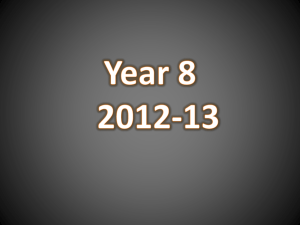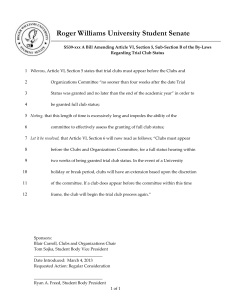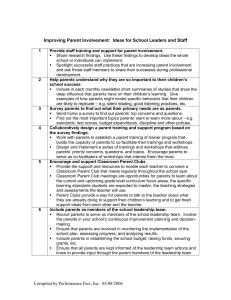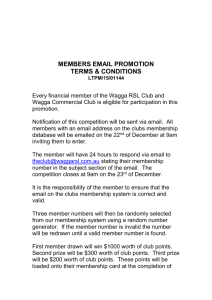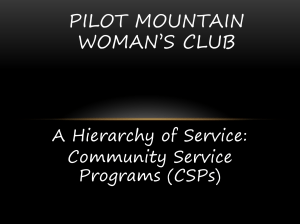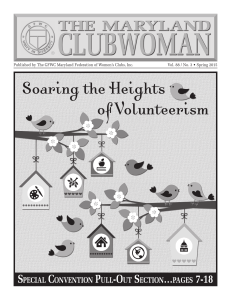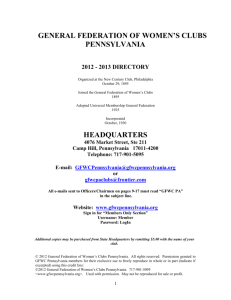White Womens Club Movement
advertisement
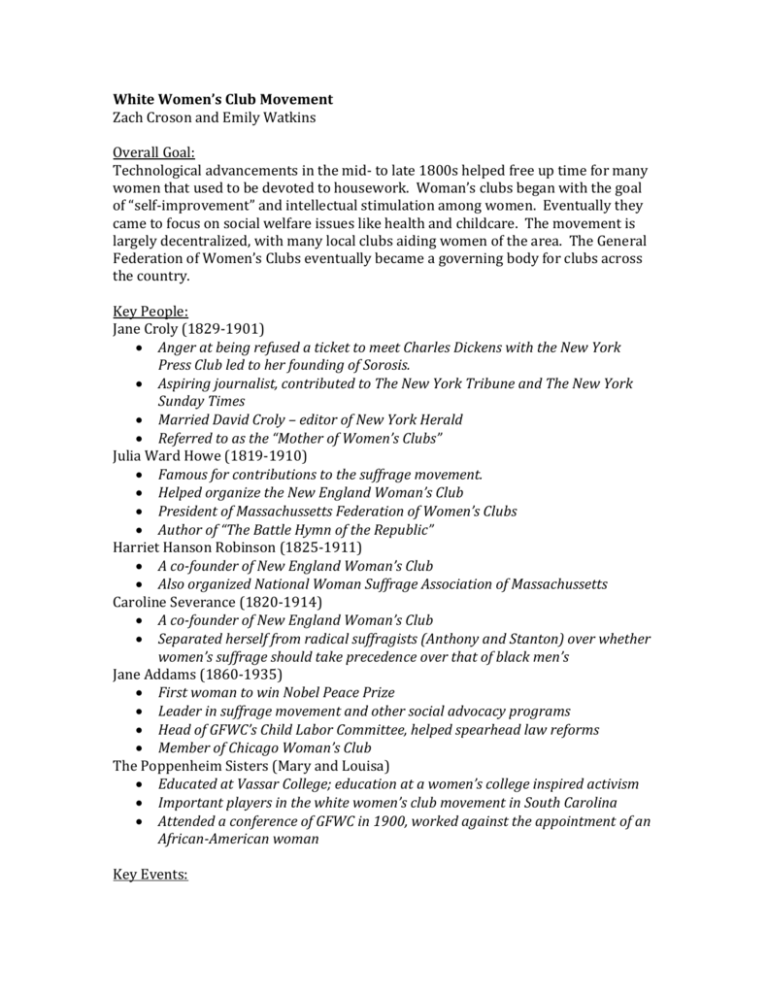
White Women’s Club Movement Zach Croson and Emily Watkins Overall Goal: Technological advancements in the mid- to late 1800s helped free up time for many women that used to be devoted to housework. Woman’s clubs began with the goal of “self-improvement” and intellectual stimulation among women. Eventually they came to focus on social welfare issues like health and childcare. The movement is largely decentralized, with many local clubs aiding women of the area. The General Federation of Women’s Clubs eventually became a governing body for clubs across the country. Key People: Jane Croly (1829-1901) Anger at being refused a ticket to meet Charles Dickens with the New York Press Club led to her founding of Sorosis. Aspiring journalist, contributed to The New York Tribune and The New York Sunday Times Married David Croly – editor of New York Herald Referred to as the “Mother of Women’s Clubs” Julia Ward Howe (1819-1910) Famous for contributions to the suffrage movement. Helped organize the New England Woman’s Club President of Massachussetts Federation of Women’s Clubs Author of “The Battle Hymn of the Republic” Harriet Hanson Robinson (1825-1911) A co-founder of New England Woman’s Club Also organized National Woman Suffrage Association of Massachussetts Caroline Severance (1820-1914) A co-founder of New England Woman’s Club Separated herself from radical suffragists (Anthony and Stanton) over whether women’s suffrage should take precedence over that of black men’s Jane Addams (1860-1935) First woman to win Nobel Peace Prize Leader in suffrage movement and other social advocacy programs Head of GFWC’s Child Labor Committee, helped spearhead law reforms Member of Chicago Woman’s Club The Poppenheim Sisters (Mary and Louisa) Educated at Vassar College; education at a women’s college inspired activism Important players in the white women’s club movement in South Carolina Attended a conference of GFWC in 1900, worked against the appointment of an African-American woman Key Events: 1890: Jane Croly invites delegates from women’s clubs across United States to a convention, form GFWC. Key Organizations: Sorosis (1868) First professional woman’s club in the United States. Eventually turned into GFWC. Founded by Jane Croly General Federation of Women’s Clubs (1890) “International women's organization dedicated to community improvement by enhancing the lives of others through volunteer service.” In 1800s, worked towards reforms in child labor, juvenile court laws, other social reforms New England Woman’s Club (1868) Founded by Julia Ward Howe and Harriet Hanson Robinson Other notable members include Ednah Dow Cheney, Mary Livermore, Lucretia Mott, Elizabeth and Lucretia Peabody, Caroline Severence, and Lucy Stone Lecturers in early days included Ralph Waldo Emerson and Henry James United Daughters of the Confederacy (1894) Promoted by the Poppenheim sisters. Purpose: to preserve memory of those that served the Confederacy References: Everist, Robyn. “Women Stretching Outwards: Feminism and the Club Woman Movement in the United States at the Turn of the Twentieth Century.” Lilith Issue 2 (1985): 30-41. Flexner, Eleanor and Ellen Fitzpatrick. Century of Struggle: The Woman’s Rights Movement in the United States. Cambridge: Belknap Press, 1996. Haarsager, Sandra L. “From Study to Action: The Impact of a Half-Century of Women’s Club Activism in the Northwest.” Journal of the West Vol. 42 Issue 3 (2003): 9-16 Johnson, J. (2002). Southern Women at Vassar: The Poppenheim family letters, 18821916. Columbia, SC: University of South Carolina Press. Scott, Anne Firor. Natural Allies: Women’s Associations in American History. Urbana and Chicago: University of Illinois Press, 1993.
